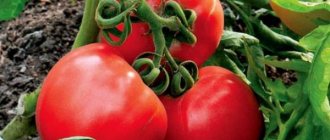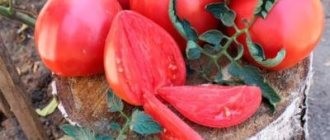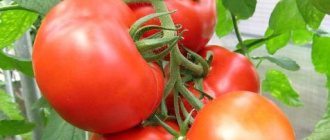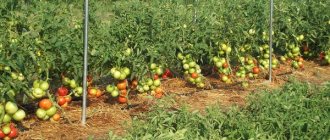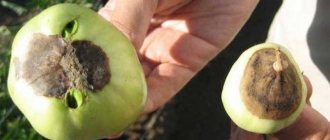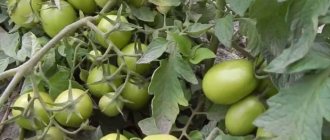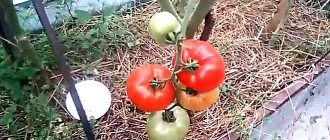Description of the method
The method of growing tomatoes with 2 roots helps solve a number of problems. In this way, you can give greater vitality to those seedlings that did not have enough light, and therefore they grew thin, long and weak (read about methods of growing seedlings and rules for caring for them here). Or there are too many seedlings, and using this method you can use all the young plants, planting them in a relatively small area.
The essence of this method is to combine two plants into a single organism, which will have a beneficial effect on the condition of the tomato bush and its productivity, because two root systems will feed one above-ground part.
Growing a tomato on two roots. Tomato grafting
Agricultural technology of tomatoes Author: Tomat.TOP. February 17, 2021 Category: Tomato agricultural technology.
One tomato on two roots or tomato grafting. Does it make sense to grow a tomato with two roots? Super way or just another stupidity?
Tomato lovers are constantly experimenting with plants in the hope of getting the biggest harvests possible, as early as possible, and as big as possible. One popular option is to grow tomatoes on two roots.
The point is that even at the seedling stage, two tomatoes growing nearby are fused with trunks below the cotyledons, the so-called grafting of the second root system from another tomato is carried out, after merging, one of the tomatoes is cut off and you get one tomato on two roots.
The root system of a tomato, like that of other plants, has a huge impact on the plant and it is impossible to get a good harvest from a tomato that has weak roots.
The logic of the action is that one plant with two roots will receive a much better supply of nutrition and, due to this, will be blessed with an unimaginable harvest of tomatoes.
Some inquisitive minds go even further and graft two or even three roots onto one tomato.
Is there any point in growing tomatoes with two roots? Is this method justified?
The site long ago decided on the answer to this question, having conducted its own experiment on growing one tomato on two roots.
Tomatoes are very hardy plants and you can graft one tomato onto another without much difficulty. In just a week, maximum two, the tomatoes will grow together, and you will be able to leave only one tomato on two roots.
I won’t bore you and save your time, I’ll say right away that it has been experimentally proven that from a tomato grown on two roots:
- you will not get a larger tomato harvest;
- you will not get an earlier harvest of tomatoes;
- you will not get a harvest of larger tomatoes;
- One tomato on two roots will yield half as much as two independent tomatoes.
There is no point in growing one tomato on two roots. You will only waste your time, use up more seedlings and will not get any benefits from using this method.
Growing one tomato on two roots is just pampering! The method is absolutely not justified, I checked it myself and many have already been convinced by experimenting, but if you are one of those who wants to see for yourself, then of course try it, because the procedure is simple, there is nothing complicated in such a vaccination.
It is better to spend your time stimulating the development of the tomato root system, creating optimal conditions for the development of tomato seedlings, and the correct formation of the bush.
Improve lighting, add soil to get additional roots, maintain temperature conditions, provide proper nutrition, and then your seedlings, and later the adult plant, will give you a good harvest of tomatoes.
It is much more important, for example, to use a larger container for growing seedlings in order to obtain well-developed seedlings and an early harvest of tomatoes.
Read about the influence of soil volume on tomato seedlings on the website in the article - Dependence of soil volume for growing high-quality tomato seedlings for an early harvest.
0
Tags: Growing tomatoes
- Back
- Forward
Add a comment
Advantages and disadvantages
This method of growing tomatoes has several advantages:
- helps increase productivity by 30 - 40%;
- promotes acceleration of fruit filling and ripening;
- increases the size of the fruit (you can learn about the difficulties and features of growing large tomatoes here);
- improves the resistance of tomatoes to various diseases;
- extends the growing season.
There are significantly fewer disadvantages: the main ones are the significant time investment of the vegetable grower and the presence of certain skills in plant grafting. If ablation is carried out on seedlings, then due to the fragility of the stems, a large amount of planting material can be spoiled.
Ablation is one of the grafting methods, in which nearby shoots are fused into a single whole. Rootstock is the plant that is grafted; scion - a part that is grafted onto the rootstock to give it new properties.
Tips and tricks for gardeners
Before planting seedlings, it is necessary to carefully prepare the greenhouse.
They start by preparing the soil. In the spring it is dug up, adding humus and complex mineral fertilizers. 7 - 10 days before planting seedlings, it is necessary to disinfect the soil in order to destroy the larvae of wintering pests and free them from pathogens of various diseases.
Note! Closed ground conditions created artificially should have a beneficial effect on planted tomatoes, promote plant adaptation and rapid growth. If you have to plant a small number of bushes (10 - 15), you can do without planning
When planting entire beds, it is necessary to calculate the required number of seedlings. Decide on the size of the beds and the passages between them. Have all the tools and materials for marking:
If you have to plant a small number of bushes (10 - 15), you can do without planning. When planting entire beds, it is necessary to calculate the required number of seedlings. Decide on the size of the beds and the passages between them. Have all the tools and materials for marking:
- ropes;
- pegs;
- a measuring meter or marker (made of a wooden board) to clearly mark the location of the holes.
When choosing the location of seedlings in a greenhouse or greenhouse, it is necessary to take into account the features of placing bushes, which differ from planting in open ground. Due to the limited area of greenhouses, it is necessary to save usable space by using it rationally.
On a note. Large spaces between bushes stimulate leaf growth, promote the appearance of a significant number of branches, and slow down the ripening of fruits.
Important! If the planting is too dense, there is a lack of sunlight and nutrition received, which can lead to the death of the bushes. It is necessary to take into account the average recommended norms when placing seedlings:
It is necessary to take into account the average recommended norms when placing seedlings:
- provide an area of at least 0.3 square meters per plant;
- the distance between bushes in one row is 40 cm;
- between rows 50 - 60 cm.
These values vary depending on the type and variety of tomato.
Tape planting scheme
Plantings should not be allowed to become denser; the plants will not receive enough light and nutrients; in addition, the likelihood of diseases and pests will increase.
When choosing a location, it is necessary to take into account what crops were grown here last season. Unwanted Precursors:
- bell pepper;
- potato;
- eggplants.
Tomatoes will feel comfortable where they previously grew:
- cucumbers;
- cabbage;
- zucchini;
- peas;
- garlic;
- onion.
After marking the beds, they begin to create holes; their diameter depends on the selected varieties:
- 20 cm - for low-growing tomatoes;
- 30 cm - for tall people.
Hole depth: 12 - 15 cm.
2 liters of a hot, slightly pink solution of potassium permanganate are poured into the prepared wells. When the liquid is absorbed, a seedling with a clod of earth is placed in the hole, deepened to the first lower leaves. Loose soil is added on top, lightly compacted and mulched with peat or humus.
On a note. When the plants grow, it is necessary to monitor and promptly remove the lower leaves and emerging stepsons.
To obtain a high yield, the placement of seedlings in the greenhouse plays an important role. When planting tomato seedlings, it is necessary to adhere to the recommended standards, correctly mark out the beds and passages between them in order to create favorable conditions for the development of tomatoes, gain free access to each plant and provide proper care.
Preparatory work
Harness
Experienced gardeners use strips of non-woven material 0.5 mm wide as strapping. If there is no such material, then it can be replaced with gauze strips, clothespins for fixing the orchid peduncle, soft foil, just linen rope or twine. Some vegetable growers use stretch film or electrical tape, but they have opponents who believe that a greenhouse effect occurs under the film, promoting the formation of rudimentary roots at the grafting site.
Suitable varieties
It is better to subject low-growing varieties of tomatoes (Astrakhansky, Zagadka, Raja, Khlebosolny and others) to ablation: the heavy stems of indeterminate varieties may break at the point of splicing.
also grow tomatoes of different varieties, one of which has excellent taste (Gina, Appetizing, Waterfall, Family, Abundant, Aphrodite and others), and the other is resistant to diseases (Alaska, Firebird, Bohemia, Blitz, Sensei and others ).
Seed preparation
Before sowing, seeds are pre-soaked in a 1% solution of potassium permanganate, in a solution of aloe juice (1:1 with water), in a solution of Fitosporin. This will allow the seeds to strengthen the immune system, become more resistant to diseases, and produce a bountiful harvest later.
Read more about how to treat tomato seeds before sowing in a separate article.
Necessary equipment
Planting seedlings will require a large number of seedling containers. For these purposes, you can use milk cartons, cut plastic bottles, flower pots with a diameter of 11 - 12 cm, etc. For ablation you will also need a sharp blade, cotton wool, and salicylic alcohol.
How to plant tomatoes in the ground (video)
To stimulate growth
Stimulation of growth processes is an important stage in growing tomatoes.
For this purpose, you can add ready-made fertilizer for vegetable crops to the planting hole or use folk remedies. Adding yeast mixture in spring gives very good results. This simple nutritional composition should be added to each planting hole a day before.
To prepare a yeast planting mixture, you need to dilute 10 g of yeast in a bucket of settled water at room temperature. You can add several crystals of potassium permanganate to the yeast solution.
Yeast feeding should be infused for 24 hours, and when planting tomato bushes, about a glass of the mixture is poured into each hole.
In pre-prepared planting holes, before planting tomato seedlings, experienced gardeners recommend pouring eggshells crushed to a powdery state, which helps enrich the garden plant with the main nutritional components. Regular wood ash can also be a good source of potassium.
obtained from burning straw, wild herbs or sunflower green mass. Approximately 80-100 g of this fertilizer should be placed in one prepared planting hole.
What fertilizers should be applied to the hole when planting tomatoes?
When growing tomatoes you need to remember:
that mineral nitrogen and potassium fertilizers are most often applied only in the form of liquid fertilizers, so there is no need to pour such compositions into planting holes. Tomatoes belong to the category of garden crops, which are better to be slightly underfed with useful substances than to add too much of them when planting. It is for this reason that it is generally accepted that only the gradual introduction of such nutrients at each stage of growth and development of a vegetable crop is a rational method.
Any phosphorus-containing fertilizers must be applied to the soil when planting vegetable seedlings in a permanent place. This type of fertilizer allows tomato bushes to adapt as quickly as possible and speeds up the flowering process. Phosphorus-containing compounds help improve the quality characteristics of the crop being formed,
and also accelerate the ripening time of fruits and increase plant productivity. Potassium and nitrogen fertilizers are given only at the stage of formation of the first flowers on tomato bushes. The result of a lack of such components in the soil is withering and weakening of tomato bushes, as well as the formation of a small number of small and watery fruits.
What to add to the hole to protect against pests
In order to prevent damage from late blight and alternaria, all planting holes, as well as the soil around the planted plants, must be spilled with a solution of trichodermin. Experienced gardeners also recommend pouring a handful of regular onion or garlic peels into each planting hole under tomatoes to protect tomato bushes from pathogenic microflora.
After planting tomato bushes in a permanent place, it is advisable to mulch the soil, which can significantly reduce the risk of garden plants being damaged by diseases or pests. You also need to remember that the most reliable way to avoid crop diseases is still to plant only the most resistant varieties or hybrids of tomato.
Planting and ablation
Basic Rules
You can grow tomatoes that have already been planted in open ground, but it is better to carry out ablation while planting the seedlings.
- Some gardeners who follow the lunar calendar carry out such manipulations only during the waxing moon.
- The time for vaccination is evening; it is even better to carry out such a procedure in cloudy weather.
- The fragility of seedlings can be reduced by refraining from watering for several days before ablation.
- The grafting site should be 10–12 cm from the soil.
- As the stems grow and thicken, the binding should be gradually loosened.
Deadlines
Tomato seeds should be sown in mid-February - early March. After 2 - 3 weeks, the seedlings are picked (you can find out how to grow tomato seedlings from seeds without picking at home here). A month before planting seedlings in open ground (approximately in the middle - end of April), ablactification is carried out. Splicing usually occurs within 10 – 15 days.
How to grow tomatoes with double roots: step-by-step instructions
- Sowing and growing tomato seedlings is done in the usual way.
- After the appearance of the second true leaf on the seedlings, the tomatoes should be planted in separate containers. Plants are planted in pairs at an angle to each other at a distance of 2–3 cm.
- When the tomato stems reach a thickness of 4 - 5 mm, you can begin the ablation process. First, you should wipe your hands and tools with a cotton swab dipped in salicylic alcohol.
- On each plant, carefully use a blade to cut off the skin (about 1.5 - 2 cm) in the place where the splicing will take place.
- Next, the blade makes cuts at an angle of 45 degrees in those places from which the skin was removed. On the rootstock, the cut is made from top to bottom, and on the scion, from bottom to top. The depth of the cut is 1/3 of each stem, its length is 6 - 7 mm.
- The cuts should be crossed, hooking one after the other.
- The place of crossing must be tightly secured with a tie, connecting the two plants together.
- After the tomatoes have grown together, the rootstock must be removed by cutting it with a blade a little higher from the grafting site.
- The cut site is again fixed with a bandage, which can be removed after the plant has completely grown stronger (in about a week).
How to plant tomatoes in the ground: instructions
When planting tomatoes in pairs, it is necessary to place two seedlings in one hole opposite each other or crosswise. The main thing is to maintain a distance of at least 20 cm between seedlings. Only in this case will both bushes receive an equal amount of nutrients and moisture. And they will not interfere with each other during growth. This planting method is also called double-root planting.
The seedlings must be laid in such a way that the tops of the plant are directed to the north and the roots to the south. Sometimes seedlings are laid sideways, with their roots facing each other. Next, the root system is covered with soil. If the seedling has a very thin stem, then the plants should be planted deeper by about 5 or 10 cm. It should also be borne in mind that with this planting method it will be necessary to grow twice as many seedlings.
In addition, in hot regions with arid weather conditions, gardeners specifically plant a weak bush in one hole in pairs with a strong plant. Throughout the growing season, as you water and feed, a weak plant will not consume many nutrients. And the bulk of them will go to the stronger plant.
However, a weak bush will serve as a reliable support throughout the season. Because it will shelter the neighbor from heat, scorching rays, and pests. And also the bush is better pollinated. Thus, the amount of harvest will be greater in any case.
In those greenhouses where there is not much space, you have to resort to tricks in order to obtain more yield from one square meter in the greenhouse. Also, different varieties can be grown using this method, planting them in the same hole.
You can also choose varieties that are characterized by tall bushes and plant them closer to the wall. Tomato varieties with low stems are planted, on the contrary, closer to the center. This way, the plants will not interfere with each other, and you will get a tomato harvest at different times. With this planting method, it is necessary to form even rows in one line.
The two-root planting method is generally applied to planting tomatoes using seedlings. If you plant seeds directly into the soil, the number of specimens here will be greater.
To grow strong and healthy seedlings, three or four seeds are sown in one hole at once. After the seeds have sprouted and leaves have appeared on the plants, weak and small plants should be removed. If all three sprouts are strong and healthy, then the bushes can be planted further away from each other.
In addition to all of the above, some gardeners plant two plants in one hole, the lower part of the stems of which is wrapped in polyethylene. This method is good for the case when the seedlings are weak and lifeless.
In this case, the seedlings are initially grown in pairs in one cup at a close distance. This is done so that it is then more convenient to connect the two stems of crops.
Below is a method by which one strong fruit-bearing bush is made from two weak plants.
When picking seedlings, two sprouts are placed in a glass at once, planting them at a close distance of about half a centimeter or a centimeter. Then they wait until the roots have strengthened a little and become about five centimeters thick. A small section of skin is cut from the stem and cuts are made.
On one plant, the cut lines will be directed from bottom to top, and on the other, on the contrary, from top to bottom. Thus, the resulting puzzle is connected and fixed in this position. It should be noted here that the cuts should not be very deep and should not exceed half the stem of the plant.
The plant created in this way has two root systems and is much more resistant to sudden temperature changes. It tolerates drought better over a long period and holds steady during strong winds.
Care instructions
Immediately after grafting, seedlings should be shaded for 4 to 5 days. The temperature during splicing must be maintained within the range of +20C – +22C. You can put plastic bags on the grafted tomatoes for 2 days to create favorable greenhouse conditions. Watering is done with warm water at the root as the soil dries out. The grafted plant is transplanted into open ground or a greenhouse, and 1–2 lower leaves are removed (we talked about the nuances of growing tomatoes in open ground here).
When planting, both root systems need to be slightly stretched in different directions, thereby increasing the feeding area. Caring for it is the same as for a regular tomato. Be sure to tie the bush to a peg: in order not to damage the splice site, the stem is tied twice - above and below the grafting site. Also, do not forget about feeding: it is better to do it once every 10 days. Both organic and inorganic fertilizers can be applied.
How to prepare the soil for planting tomatoes
It is better to set aside a sunny place for a tomato bed in open ground on an elevated, flat area where there is no draft. The culture is considered demanding on the soil. Sandy loams richly fertilized with organic matter are ideal for it.
Important! Tomatoes will not grow well in soil that is heavy, cold, or too wet. They also cannot tolerate acidic soils.
Preparing the bed for planting seedlings takes place in 2 stages.
In autumn, the ground is cleared of plant debris and debris, and then dug up to a depth of 25 cm, turning the layer over. The structure of too heavy soil at this stage can be improved by adding sand. High acidity is eliminated by adding lime during digging. At the same time, you need to fill the soil with manure, compost or humus.
In winter, the soil will freeze, as a result of which larvae and harmful bacteria will die, and fertilizers will later be evenly absorbed into the ground along with melt water. If tomatoes will be grown in a polycarbonate greenhouse, it is recommended to replace the top layer of soil 5-7 cm thick.
Transplanting
In the spring, the soil is dug up again to make it loose and mineral fertilizers are applied (a mixture of nitrate, potassium chloride and superphosphate in the amount of 20 g/20 g/50 g per 1 sq. m is suitable). Loosening the soil will provide the horses with good access to oxygen, which will have the most favorable effect on the harvest.
Advice! If cucumbers grew in the garden last season, it will be useful to add peat or sawdust to the ground (a bucket per 1 sq. m).
2-3 days before planting, the soil is watered abundantly and covered with film.
What result should you expect?
Successful fusion can be determined visually: the stem of one of the plants will gradually thicken, become stronger and stronger due to the additional influx of juice from the other plant.
Reference. Some experimental gardeners grow tomatoes with peppers or potatoes in a similar way. You can also experiment by grafting shoots of different varieties of tomatoes onto each other, for example, with pink (Pink Honey, De Barao, Abakan Pink, etc.) and yellow fruits (Honey Spas, Persimmon, Orange, etc.).
Common Mistakes
- It is advisable to carry out grafting with young plants: their stem is still round in shape, but as it grows it becomes flat, and then the plants will not grow together.
- The shoots will not be grafted onto each other even if the tying was not done tightly.
The method of growing a tomato on 2 roots requires some effort from the vegetable grower. But if the grafting is carried out correctly, the results will exceed all expectations: there will be enough tomatoes for the table, for harvesting, and for all relatives and friends.
Growing any vegetable crop in a region with a harsh climate is a very difficult task. Therefore, you need to put in a lot of effort and time to achieve high yields. On our Internet portal you will find detailed information about planting tomatoes in Siberia and the Urals, and also find out whether peppers and cucumbers can be planted next to tomatoes.
About the benefits of vaccination
Merging 2 tomatoes significantly improves the nutrition of the plant. This affects the timing of fruiting. It starts earlier and lasts longer. The size of the fruit increases. The weight may exceed that stated in the variety description. Bushes with 2 roots:
- get sick less often;
- adapt to weather changes faster;
- more productive.
The method of merging 2 tomato bushes solves the problem of low-quality, elongated seedlings. From 2 weak plants, 1 tomato bush with a powerful root system is obtained by ablation.
Grafting makes sense if there are a lot of seedlings. Weaker plants can be used to increase the productivity of valuable tomato varieties. Splicing is often used in greenhouses. A tomato bush with 2 roots bears fruit longer, and in the second half of August it suffers less from changes in night and day temperatures.


